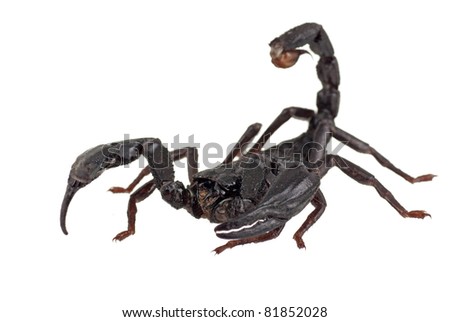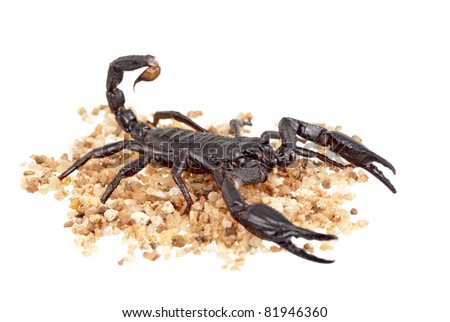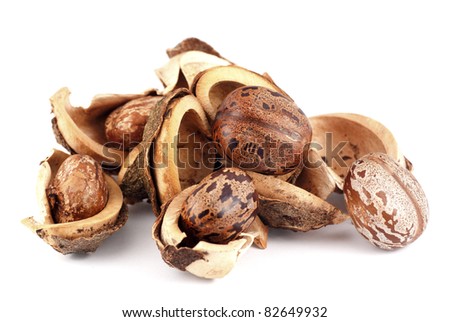Back in the newbie days before I started learning from professional photographers, the most common advice I received about shooting isolations was to place the object in a light tent, have a sheet of white paper behind the subject and snap away. While this technique may work for eBay sellers and the family album, the bar required for commercial work is far much higher and requires the bar to be raised to industry standards.
Proper isolations requires a light table, lots of light and the use of soft boxes with a internal baffle screen to diffuse the harsh light from the bulb before it strikes the main screen. Unfortunately, it also means that one must expect a loss of between 25% to 40% light loss. Hence, one must seek compensation from more powerful lights such as studio strobes if the subject is relatively larger.
Basically, there are two types of isolations as shown below: -
This image is a live Borneo Forest Scorpion On a White Background. Although the subject is surrounded by a pure white background (RGB#255), this is not a Pure Isolation. If one were to examine the image closer, very soft shadows can be seen under the scorpion. This is done intentionally and it gives a natural look to the posture of the scorpion.
This image is a live Borneo Forest Scorpion Isolated on White. Again, the background is RGB#255 but there are virtually no shadows under the scorpion. This is a Pure Isolation and created intentionally. These photography effects are captured on camera itself. If executed correctly, the image does not require any editing work other than to add a little vibrance or saturation in the editing program to make the image stand up from the page. The colors of the subject are also preserved and superior that of a background pumped up to RGB#255 using several stops in the editing program. Unless it is done properly, the image usually suffers from color deviations and artifacts.
This is another example of a Pure Isolation. The live scorpion rests of a layer of aggregates and this effect combines the properties of a Pure Isolation and On a White Background together. The only shadows that are cast off by the scorpion are on the aggregates but where members of the scorpion are outside the layer of aggregates such as the pincers or stinger, there are no shadows. So the designer gets a natural look on a Pure Isolation.
Another method is to paint the undesired background white with a #255 brush in the editing program. However, this is time intensive work and unless done properly, the image usually suffers from an unnatural look, jagged edges and loss of details. It works especially very poorly for hairlines. It is better to get the image right on camera itself.
This is another example of a Still Object on a White Background. As one can see clearly, diffused shadows can be observed under the rubber seeds but there are no shadows outside the image. The designer can easily use the Magnetic Lasso Tool in PS to pull the object from the image and place it onto another image. But if this image was a Pure Isolation, the designer has a much easier job if he or she does not want the shadows. Isolation images are usually used by designers looking for a singular image which can be lifted up cleanly and inserted into another frame to compliment another image. The technique can be applied to almost any subject include human subjects.
Note: No sharpening or unsharp mask filters were applied to these images.
Disclaimer: Do not attempt to photograph dangerous wildlife by yourself. Working with dangerous fauna such as scorpions requires professional assistance and anyone attempting to do it does so at their own risks. The author is totally not responsible nor is liable for any accidents or damages if you should attempt to work with these creatures on your own by account of this publication.




No comments:
Post a Comment